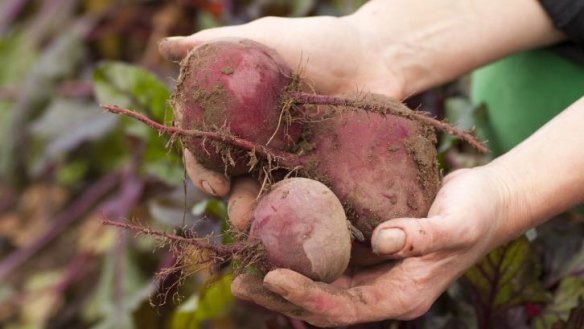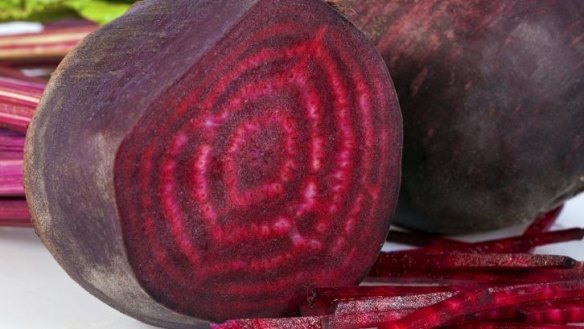Home-grown beetroot secrets revealed

Beetroot grows best in well prepared, humus-rich soil which is well drained. You can produce good crops in the heavy soils of the Canberra region, provided you ensure drainage is good. Dig in some well finished compost but avoid adding lots of nitrogen sources or you will finish up with a beautiful crop of beetroot leaves and very small beets.
If you are able to get started early, you can have your own home-grown crop in late spring. With the prospect of frosty nights, provide protection by constructing a simple cloche with a plastic cover or drape hessian over a small protecting frame.
Secession planting is a good idea, to allow you to have a good supply of this nutritious vegetable throughout all the summer and autumn months, so plant out another row every three to four weeks. It is one of the fastest root vegetables, maturing in 8 to 10 weeks after planting.

Sow directly into the garden now and keep planting out rows each two or three weeks, leaving 25 to 30 centimetres between rows. The seeds should be planted at a depth of 1.5 centimetres and spaced to 10 centimetres. Germination rates can be boosted by soaking the seeds in water for several hours before planting them out. Keep the soil moist until the shoots appear.
From the time of planting, the little seedlings will appear in about 10 days. You have spaced the seeds out well when planting but multiple plants may still appear as each bumpy seed is really a package of three or four fertile seeds. You can let them all grow for a while then thin out when the seedlings are five centimetres in height and cook up the delicious baby beets. Leave 10 to 12 centimetres between each final plant so that the beets are not limited by space.
If you only have a balcony, you can grow a small supply of beetroot in a planter box. Fill the box with potting and compost mix and sow three to four seeds in each of two rows. Keep well watered.
Grow the plants on quickly as they come to maturity. Keep the water up to the plants, especially when the days become quite hot. Give them a fortnightly supplement of well diluted fish emulsion or seaweed solution foliar spray.
The more typical beetroots are those with round, globe-shaped roots. Detroit is a well-known, high-yielding variety and Early Wonder can produce a quick summer crop. Golden beetroot is a sweet variety with a light golden interior.
As well, there are two good varieties now available which have fancy coloured rings. Chioggia which comes from the northern regions of Italy, is available here and grows well during the spring months. It has a sweet and nutty beetroot taste. The outside skin is rosy pink and the inside has the striking red and white rings. Bull's Blood produces a darker red and pink rings inside. The young leaves of this variety are a great addition to your salad mixes.
Long cylindrical varieties of beetroot are also good to grow. They will take one or two weeks longer to grow to full size but you can harvest them when still baby beet-sized. Cylindra grows a long dark red root which retains its sweetness even at a late stage. It can be peeled and sliced very easily.
Beetroot can be roasted or steamed. Boil up small beets and serve whole in salads or hot, as an extra vegetable with meat dishes. Always cook beetroot with the skin on and with at least five centimetres of stalk attached. Test that the beets are cooked by simply checking with a fork, for softness. The skins will then peel off easily.
This week in the garden
- Plant coriander, dill, Florence fennel and chervil directly into the garden bed.
- Make a late sowing of broad beans and peas, both shelling and sugar snap.
- Plant seeds of small head cabbages, celeriac and salad bowl lettuces.
- Check your records of last year's plantings to ensure good crop rotation for the spring plantings.
- Secure seed potatoes and keep them in a semi-shaded location to begin the chitting process (develop early shoots) before planting.
- Spread well-finished compost over your vacant garden beds well before spring planting.
- Do not prune off frost-damaged leaves from citrus trees and other damaged plants yet, as they will provide some protection to the remaining new growth leaves underneath.
Restaurant reviews, news and the hottest openings served to your inbox.
Sign up